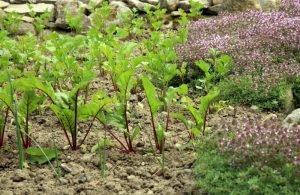Last Updated on October 30, 2025 by teamobn
If you live in Europe, China, or the United States, then you are likely to see wild chicory flowers in full bloom soon. Wild chicory will grow just about anywhere and the flowers are impossible to miss. Bunched in roadside clusters, the blossoms are among the most striking in the bright summer landscape. The individual flowers are as big as silver dollars, blue as the July sky.
The famously bitter radicchio of Italian cuisine is actually a variety of this perennial wild plant, although you would never guess that by their appearance. There are three main forms of radicchio: ball-headed, which are cabbage-shaped; upright forms, which have pointed leaves; and closed-head radicchios, which look more like lettuce.
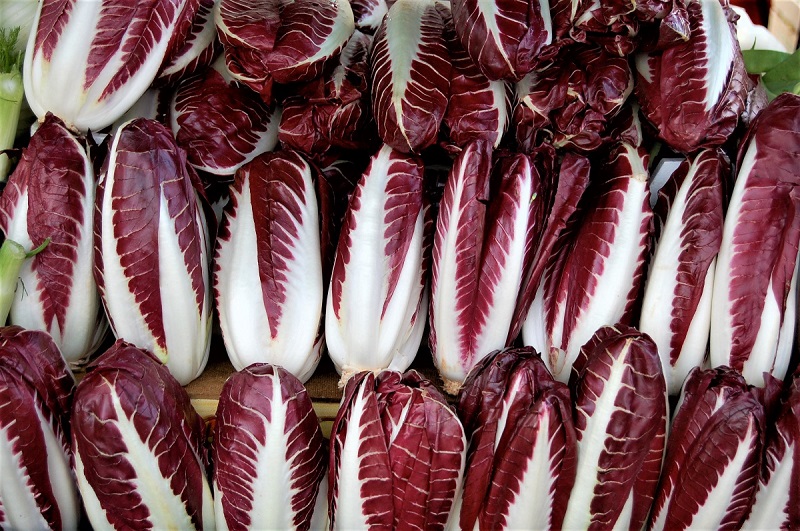
How to Grow Radicchio from Seeds
Contents
Radicchio will flourish in a sunny, well-prepared garden bed with moist, moderately fertile soil. You can sow radicchio seeds in early spring, about two to three weeks before the last frost. But you can also sow in mid-summer for a fall harvest.
Sow radicchio seeds evenly in rows that are 12 inches apart. Cover the seeds with about a quarter-inch of fine soil. Tamp the soil down lightly over the seeds and gently water the planting bed.
Radicchio seedlings should emerge within a week or two of planting, depending on soil and weather conditions. You can begin thinning each row when the seedlings are three inches high. Thin your radicchio patch gradually, leaving only the strongest of the young plants standing 12 inches apart.
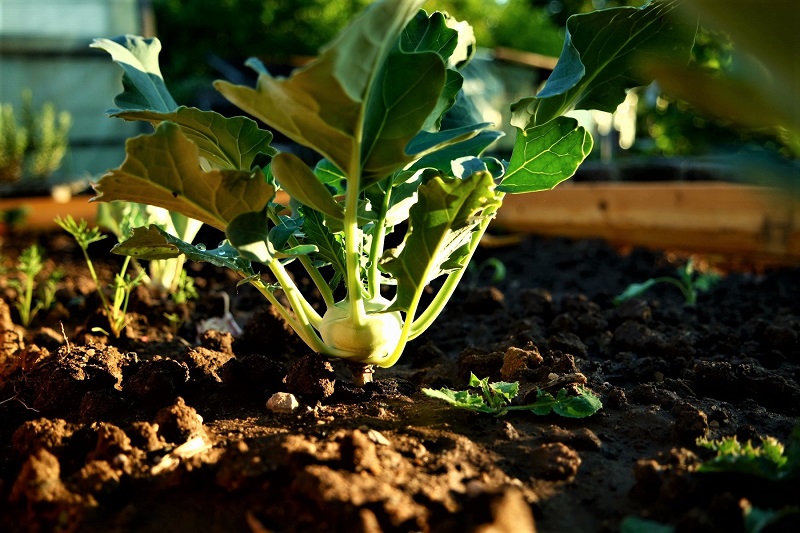
Care and Maintenance
Keep weeds in check by laying a sheet of black plastic around the planting beds during the growing season. Weeds compete with vegetable plants for water, space, and nutrients. Be careful when weeding around the vegetables. Radicchio is shallow-rooted.
Keep the plants well-watered during dry periods to promote rapid, uninterrupted growth. Radicchio requires an inch of water each week. If possible, use drip or trickle irrigation system that delivers water at low pressure at the soil level.
If you water with overhead sprinklers, do so early in the day. This will allow enough time for the foliage to dry before evening. Keep the soil moist but not saturated.
While radicchio is rarely bothered by pests and diseases, check your patch on a regular basis. If need be, consult your local extension service for the best natural pest and disease control methods in your area.
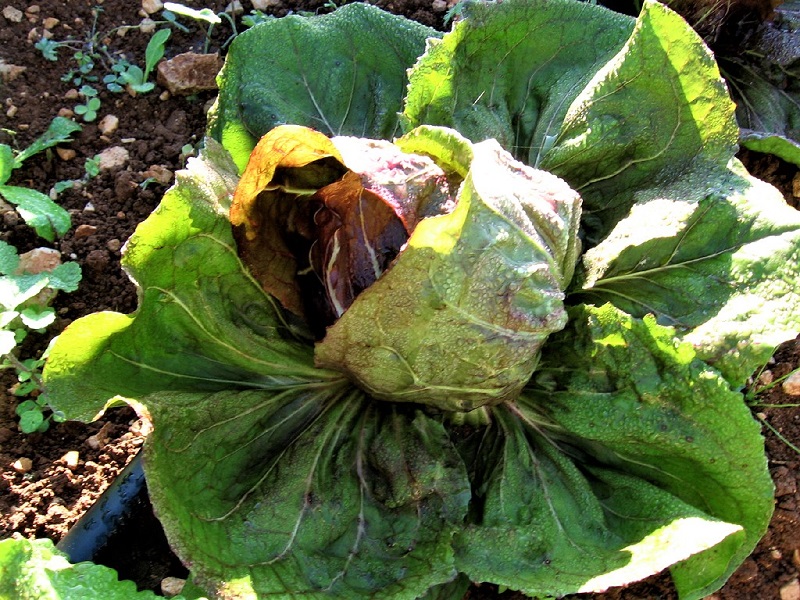
(Photo: Paolo Ciarlantini/Wikimedia Commons)
Harvesting Radicchio
You can harvest individual radicchio leaves any time once the plant is well-established. If you want to harvest full radicchio heads, do so when they are firm to touch. That will usually be the case around 65 days after sowing. The older the head, the more bitter the flavor.
If fresh radicchio is too bitter for your taste, try harvesting the heads after a frost. The cold tends to sweeten their flavor.
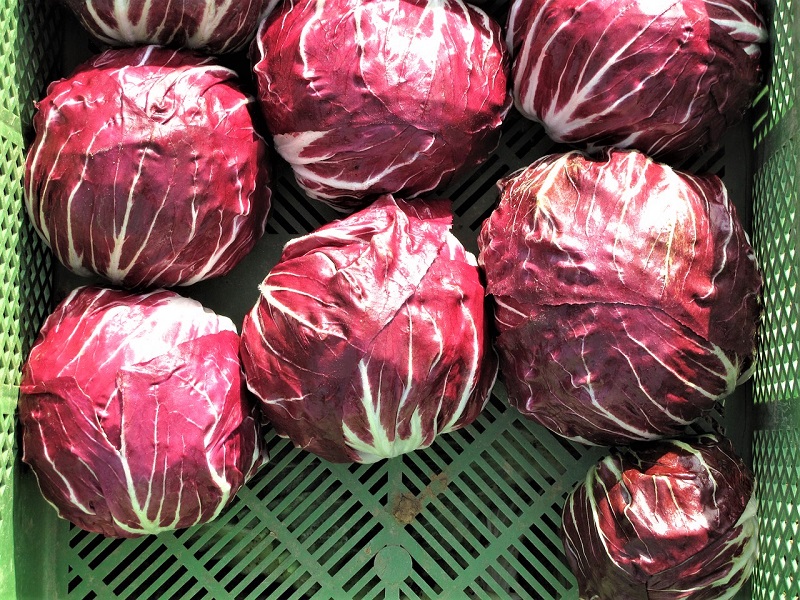
Climate Timing for Growing Radicchio in Warm and Cool Regions
Radicchio rewards gardeners who match sowing dates to local temperatures. Aim for steady cool growth, then a chill to color and tighten heads. Adjust timing to your climate so plants size up without bolting.
Cool-Summer Calendars
Gardeners in coastal or high-elevation zones can sow from late spring through midsummer and still hit the sweet spot. Start seeds when daytime highs sit in the 60s to low 70s. Transplant after two to three weeks once seedlings have four true leaves. Plan for harvest as nights dip into the 40s and 50s. Heads color up fast in that cool window and bitterness stays in check.
Hot-Summer Adjustments
Areas with hot summers need a fall schedule. Start seeds indoors in late summer under lights to avoid heat-stressed germination. Harden off in partial shade, then set out when highs fall below the mid-80s. Use shade cloth for two weeks to prevent stall. Keep moisture even to avoid tip burn. As nights cool in autumn, heads tighten and blush burgundy. A light frost improves sweetness without harming mature plants.
Shoulder-Season Sowing
Straddle spring and fall to keep a steady supply. For spring harvest, sow very early and use row cover to speed growth before heat arrives. For fall harvest, sow in midsummer so heads mature as nights cool. Stagger plantings every two weeks. This offsets weather swings and lets you harvest at peak density and color rather than rushing or waiting too long.
Mild-Winter and Overwintering Windows
Mediterranean and zone-8+ gardens can overwinter certain types. Transplant in early fall so plants reach half size before winter. Use light fleece during cold snaps, then remove it for airflow. Heads will firm up after repeated chills. Harvest as soon as cores feel dense. Prolonged warmth in late winter can trigger bolting, so cut promptly once color and weight look right.
Choosing Varieties: Chioggia, Treviso, Castelfranco, and Tardivo
Picking the right type sets expectations for shape, color, and timing. Match variety to your climate and kitchen goals. Crisp salads want mellow crunch. Grilled halves want dense hearts that caramelize and hold texture.
Chioggia (Ball-Headed)
Classic round heads with tight burgundy wrappers and white ribs. Reliable in many climates and forgiving on fertility. Sow for fall harvest to reduce bitterness and boost color. Heads feel like compact cabbages when ready. Great raw in salads or wedges on the grill. Choose mid-season strains for steady heading. If heat looms, add shade cloth during establishment and irrigate consistently for clean, bitter-smart flavor.
Treviso (Upright, Pointed)
Elongated heads with layered leaves and striking white midribs. Texture holds up to high-heat roasting and braising. Needs a pronounced cool-down to color well. Space a touch tighter than ball types to encourage vertical form. Sow for late fall harvest in hot regions and early fall in mild ones. Harvest when cores feel firm but not woody. Expect a refined bitterness that pairs with citrus, anchovy dressings, and charred meats.
Castelfranco (Speckled Rosette)
Creamy green leaves flecked with red. Looser heads with tender texture and mild, nutty bitterness. Excellent for fresh salads and quick sautés. More tolerant of shoulder-season warmth than deep-red types, though best color still comes with chill. Avoid heavy nitrogen late in the cycle or leaves can soften too much. Time harvest just as the heart tightens slightly. Plate appeal is huge, which helps convert bitter-shy eaters.
Tardivo (Forced, Frisée-Like)
A specialty type that shines with traditional forcing. Field-grown plants reach half to full size, then are lifted and placed in dark, cool conditions to regrow into sculpted, wine-red curls with luminous ribs. Flavor turns concentrated and pleasantly sweet-bitter. Requires planning and patience but delivers premium results for winter salads and grills. Best for mild-winter regions or growers willing to manage forcing tubs in a cool shed or cellar.
Conclusion
For those who do not mind its gently bitter taste, radicchio is an excellent substitute for lettuce in salads. You can also sauté or steam the leaves. Grilling sweetens the taste of the vegetable, as well.
Are you ready to grow your own radicchio?




